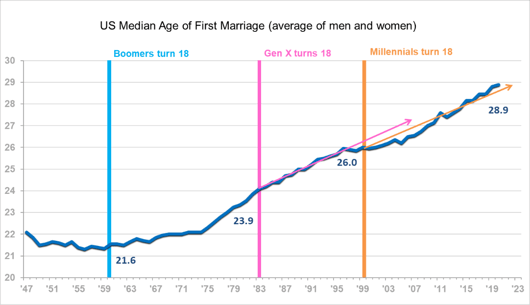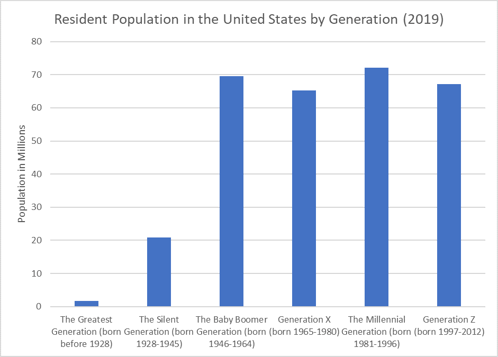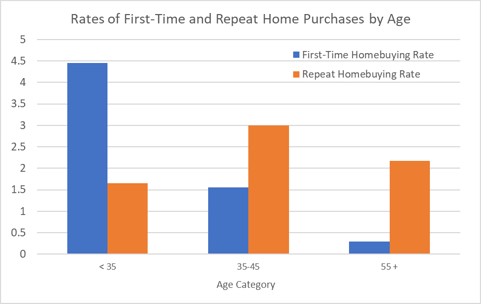There is understandably angst and uncertainty about our future these days. I find it helps to keep an eye on today (the cause of the angst and uncertainty for many) and an eye on the future. One of the great drivers regarding the future is the millennial generation in the US.
Much is written and discussed regarding how millennials get married later in life and therefore are delaying having children. The chart below shows the median age at which the average of men and women get married for the first time from 1947 to date. The age of marriage crept up in the 1960s and early 1970s. Perhaps not coincidentally, that was a relatively calm economic period, albeit a socially disruptive one (free love did not exactly engender the need or urgency for early marriages). The trend takes on a steeper slope following the severe and disruptive recession of 1974-75. For our purposes, the chart shows the delay in marriage exhibited by the millennials is essentially an extension of the trend begun by boomers and carried forward by Gen X.

1. The millennials are more like prior generations than we perhaps previously thought.
They are more likely to act economically like the prior generation as they age. They will have different channels, opportunities, and perhaps political interests, but they are likely to have the same family-related economic drivers as later boomers and Gen X. They are a market for us to serve as they power the US economy forward.
The first chart below shows the relative size of the recent generations. The millennials are the largest generation we have ever seen in the US. The probability of their age-adjusted economic interests aligning with the prior generation is important in terms of understanding their needs and familial wants. They may want it packaged differently and clearly technologically advanced, but business leaders should be able to figure that out and position their businesses accordingly. An example of this is found on the second chart below. The millennials are the drivers behind the housing market, in terms of first-time home buyers, as you would expect. Next up are the younger Gen X folks followed by age 55 and older. That dispersion is not surprising, and that is comforting. The distribution is different for repeat homebuying, but also as one would expect.


2. The millennials are flexing their economic muscles.
They have come of age and are moving into economic trends we can understand and capitalize upon. Their kids' generation, Gen Z, is smaller than the millennials in size but larger than Gen X. Combined, millennials and Gen Z represent more latent consumerism than the boomers and Gen X put together.

The chart above is our forecast for Single-Family Housing Starts through 2023. We are calling for a rising trend that will bring us back to a Single-Family Starts annual level last seen in 2007 (with additional rise likely post 2023, but perhaps not immediately). We see this trend as probable based on the economic fundamentals of a) incredibly low long-term interest rates, and b) currently very low inventory levels for new and existing homes. Fortunately, compounding these fundamentals is the largest generation ever known on our shores wading into the economy and making a splash.
3. The millennials are a key market.
It is incumbent upon business leaders to learn where the millennials are in their age-adjusted journey and position their marketing/businesses accordingly. Are millennials really less likely to ever own a car? Recent studies are mixed . It seems they take longer trips than the older generations (also not surprising). Perhaps they are simply waiting for the next gen of EVs, or perhaps their buying patterns will be influenced by the WFH trends, which could later affect their environment and therefore needs. Be sensitive to where the splashes are occurring.
We think millennials may be more alike relative to prior generations than previously assumed. They have largely the same need to satiate their wants, and what they want doesn’t seem to have morphed all that much more dramatically than my wanting a cell phone versus my parents' wanting a private land line. It is still communication.
Brian Beaulieu
CEO